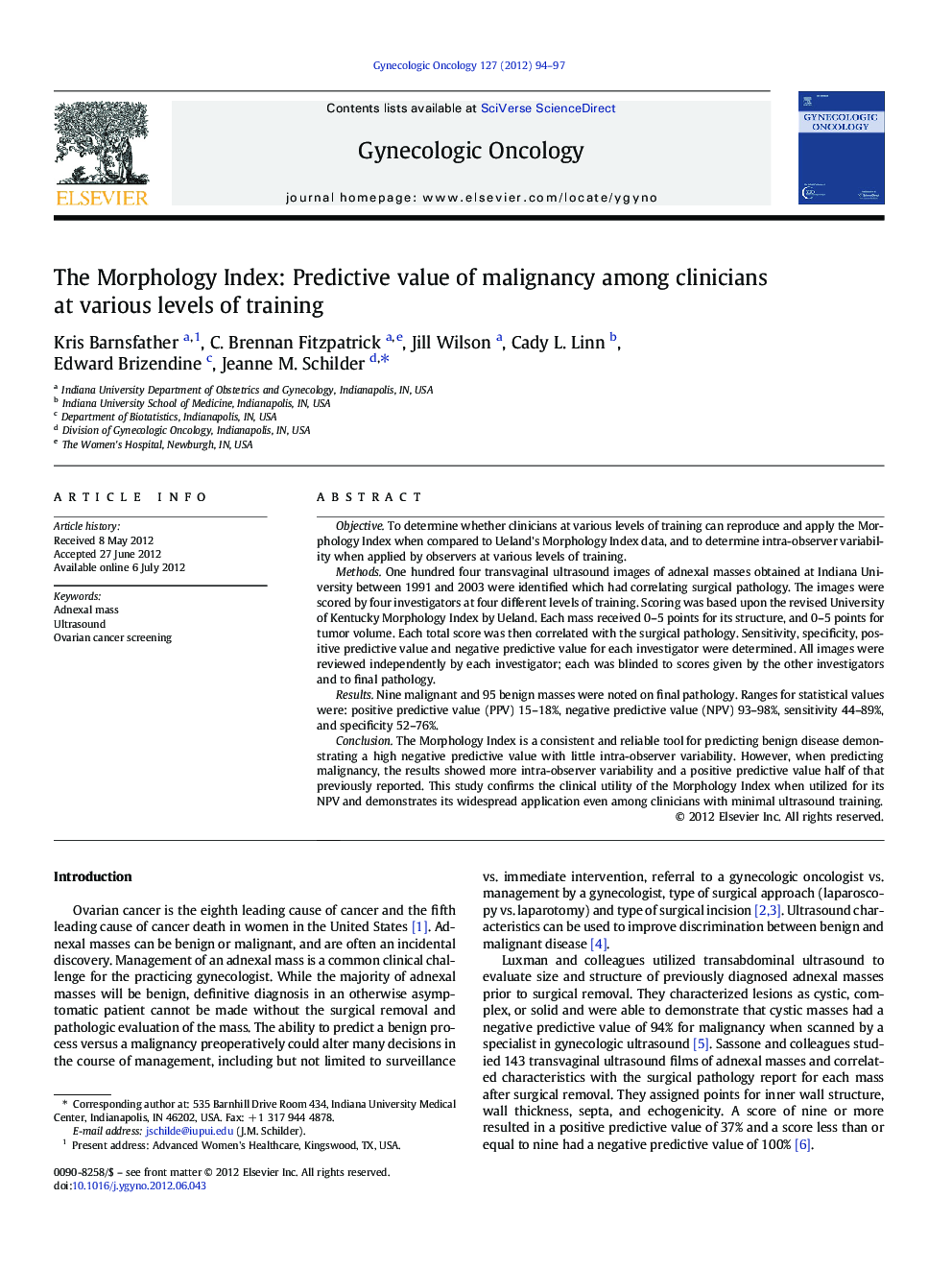| Article ID | Journal | Published Year | Pages | File Type |
|---|---|---|---|---|
| 3946903 | Gynecologic Oncology | 2012 | 4 Pages |
ObjectiveTo determine whether clinicians at various levels of training can reproduce and apply the Morphology Index when compared to Ueland's Morphology Index data, and to determine intra-observer variability when applied by observers at various levels of training.MethodsOne hundred four transvaginal ultrasound images of adnexal masses obtained at Indiana University between 1991 and 2003 were identified which had correlating surgical pathology. The images were scored by four investigators at four different levels of training. Scoring was based upon the revised University of Kentucky Morphology Index by Ueland. Each mass received 0–5 points for its structure, and 0–5 points for tumor volume. Each total score was then correlated with the surgical pathology. Sensitivity, specificity, positive predictive value and negative predictive value for each investigator were determined. All images were reviewed independently by each investigator; each was blinded to scores given by the other investigators and to final pathology.ResultsNine malignant and 95 benign masses were noted on final pathology. Ranges for statistical values were: positive predictive value (PPV) 15–18%, negative predictive value (NPV) 93–98%, sensitivity 44–89%, and specificity 52–76%.ConclusionThe Morphology Index is a consistent and reliable tool for predicting benign disease demonstrating a high negative predictive value with little intra-observer variability. However, when predicting malignancy, the results showed more intra-observer variability and a positive predictive value half of that previously reported. This study confirms the clinical utility of the Morphology Index when utilized for its NPV and demonstrates its widespread application even among clinicians with minimal ultrasound training.
► The morphology is reproducible at various levels of ultrasound experience. ► The morphology index is a clinically useful tool in predicting benign masses. ► A low morphology index allows for surveillance of the mass. ► A mass with a high morphology index usually deserves surgical management.
